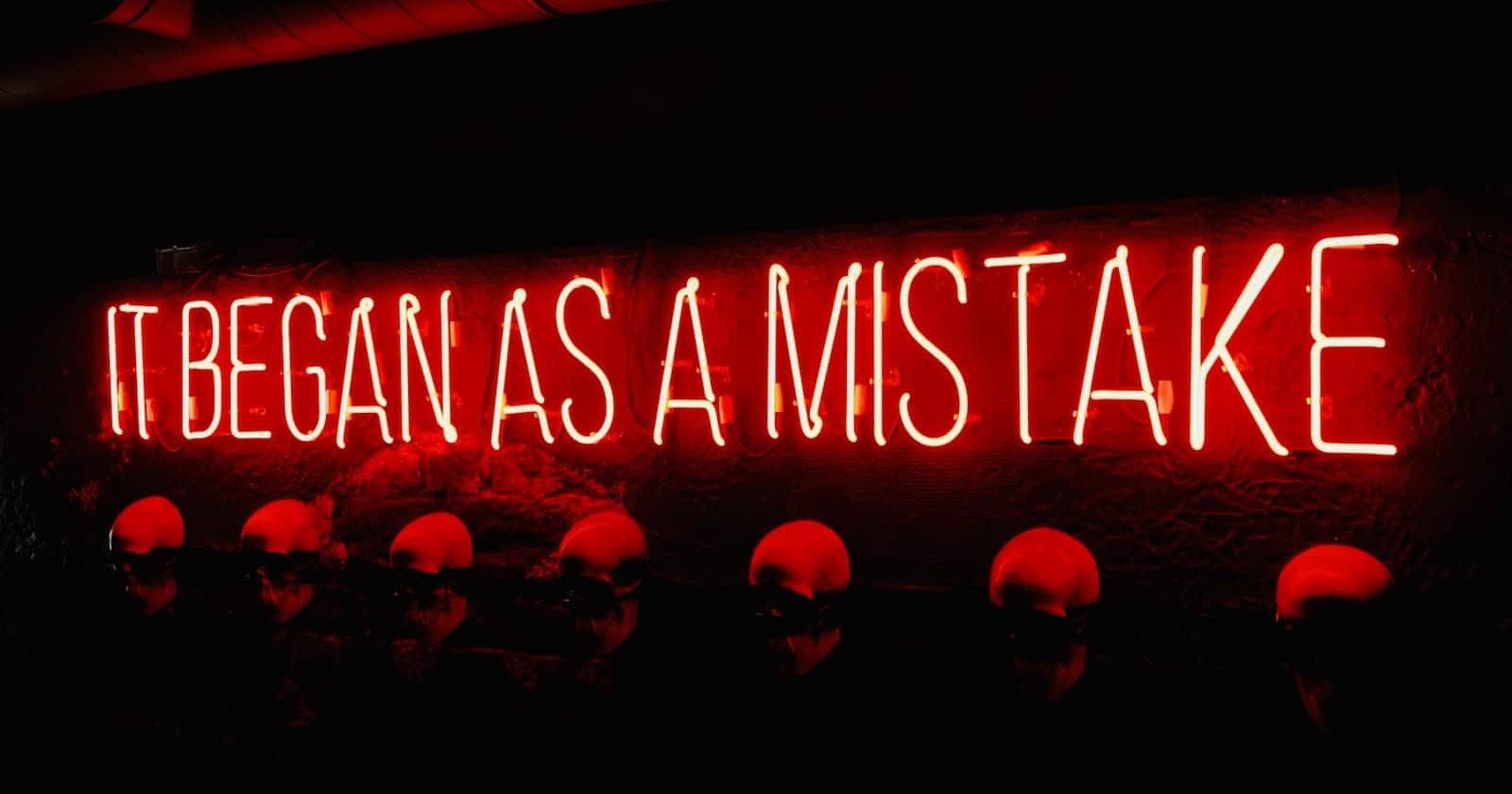
Embracing Mistakes in Machine Learning Modeling: A Path to Growth and Improvement
Blog #4
Table of contents
No headings in the article.
The road to successful modeling is frequently paved with errors in the quickly developing field of machine learning, where data-driven decision-making has become commonplace. Even if it goes against logic, making mistakes is a necessary component of learning. There is a proverb that states, "Here is the thing about mistakes: sometimes, even when you know something is a mistake, you've got to make it anyway." The present piece dives into the field of machine learning modeling and discusses the value of accepting failure and how it can result in learning, development, and better models.
The Learning Curve: Mistakes as Stepping Stones:
Data preprocessing, feature engineering, model selection, and evaluation are all steps in the iterative process of machine learning modeling. Mistakes will undoubtedly be made along the way, but rather than being viewed as setbacks, they should be viewed as chances. This is why:
Data insight: Errors frequently make underlying patterns or problems in the data apparent that were first missed. Researchers can better grasp the underlying complexities and biases present in the dataset by observing unexpected results or mistakes.
Feature engineering mistakes might serve as a reminder of how crucial it is to pick the proper features and transformations. Even if they fail, trying out various strategies might give you useful information about what works and what doesn't. Researchers can increase the predicted accuracy of their models by iterating on feature engineering.
Model selection and tuning: Making mistakes when picking the right model or hyperparameters might teach you valuable lessons. Finding the best-fit model and optimisation techniques requires investigating numerous configurations and algorithms. Each error reduces the search space, improving the understanding of the issue domain and ultimately resulting in the creation of more accurate models.
Error Analysis: Mistakes made while evaluating the model reveal the constraints and flaws of the existing strategy. Researchers can identify specific areas for improvement by analysing these errors, such as resolving class imbalances, improving loss functions, or incorporating more data sources.
The Power of Failure: Fail Fast, Learn Faster:
The objective of machine learning modeling is to make mistakes early and swiftly learn from them rather than to completely avoid making any at all. Researchers can adopt a growth mentality by accepting that mistakes are inevitable, which will enable more quick and efficient model building. Here are some crucial techniques for maximising errors:
Prototyping and Experimentation:Encourage a culture of experimentation and prototyping where researchers are allowed to test out different strategies and hypotheses. Failure should not be viewed as a personal setback, but as an opportunity for growth.
Complete Documentation: Keep accurate records of the modeling procedure, including any errors made along the route. This documentation can help others learn from your experiences and be a useful resource for upcoming projects.
Collaborative Environment: Encourage a collaborative atmosphere that values candid dialogue and information exchange. Teams can learn more quickly from mistakes when there is an environment that encourages feedback and constructive criticism.
Mistakes in the field of machine learning modeling should not be feared or avoided, but rather welcomed as stepping stones towards development and advancement. Researchers can get useful insights, improve their models, and significantly increase the predictability of their results by acknowledging mistakes as an essential component of the learning process. In keeping with the saying, "Here's the thing about mistakes: sometimes, even when you know something is a mistake, you've got to make it anyway." So plunge into machine learning modeling with no fear, learn from your failures, and see how blunders might influence the direction of AI-driven decision-making in the future.

